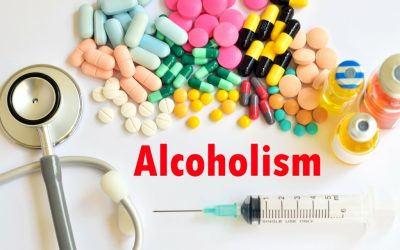What Helps With Alcohol Withdrawal? 18 Tips
Tapering is meant to reduce the withdrawal symptoms from quitting alcohol, but this isn’t a guarantee. As mentioned above, many people will still experience some level of withdrawal, just to a lesser degree. Depending on how much you drink, tapering off alcohol can take one to several weeks. It’s best to reduce your drinking by a small amount each day to avoid the shock to your system. So, if you normally have 6 beers a day, you could be done tapering within one week.
How To Make an Alcohol Tapering Schedule
These factors can make one person’s taper last longer than another person’s taper. Tapering gradually lowers the amount of alcohol that you use over time. This lessens the severity of withdrawal symptoms, as there is not an abrupt or dramatic change. Tapering will normally create less severe alcohol withdrawal symptoms but will spread them out over a prolonged period. Essentially, tapering provides less intense withdrawal symptoms but over a longer amount of time.
Change your environment
However, medically supervised detox and professional rehab are more likely to help you maintain long-term sobriety. These symptoms may start a few hours or a few days after your last drink of alcohol. Sometimes, symptoms may be severe enough to require medical treatment at a hospital or rehabilitation facility. But some people choose to manage alcohol withdrawal themselves. Here are suggestions for how to get through alcohol withdrawal at home.

Tell family members and friends you want to get healthier.
- Consuming more than that can lead to liver damage and heart disease, and increase your risk for some cancers.
- How triggers make you crave drugs or alcohol and how you can start to avoid them.
- If you answer “yes” to six or more questions, your symptoms align with severe AUD.
Serious symptoms caused by delirium tremens include hallucination and seizure. Alcohol can stay in your system for several hours depending on how much you drink. Once it begins to leave your body, early symptoms of withdrawal begin.
– Eat a balanced diet that includes healthy fruits and vegetables.
- Direct tapering is not recommended for liquor drinkers as it is challenging to measure amounts and can result in binge drinking.
- If you’re having difficulty sticking to your goal or just want some extra guidance, consider reaching out for professional support.
- Remind yourself of why you want to cut back, talk to a friend about it and distract yourself with a hobby or exercise, the NIAAA suggests.
- You should start by determining how much alcohol you drink per day in terms of standard drinks.
- Staffed by medical professionals, these programs offer 24-hour monitoring so you always have support if any complications arise.
- This can give your body the chance to adjust, helping you avoid the worst of withdrawal symptoms.
It’s also important to monitor withdrawal symptoms closely, adjusting the taper schedule if severe symptoms occur. Creating an effective alcohol taper schedule is a critical step in managing alcohol dependence and withdrawal. This personalized plan should consider several important factors to https://www.errefom.info/the-beginners-guide-to-21/ ensure safety and success. First, the individual’s level of alcohol dependence is paramount; this dictates the starting point of the taper and the gradual reduction rate. Research indicates that those with higher levels of dependence may require a slower taper to minimize withdrawal symptoms.
What vitamins and supplements help with alcohol withdrawal?
It’s best to avoid these people during and following withdrawal. Belinda Gordon-Battle is a licensed clinical therapist and life consultant based in Miami while providing therapeutic services across the globe. BGB, as her clients and colleagues call her, is an advocate of “removing the stigma” and normalizing the therapeutic process. She incorporates cultural relevance and non-traditional interventions and strategies to strengthen her clients’ steps towards goals of behavioral, emotional, social and mental wellness.

By gradually tapering off alcohol, you can lower your risk for alcohol-related accidents or death. If you’re struggling to wean off alcohol, it might be best to seek addiction treatment. Various treatment programs are available to help you recover from addiction. Risky withdrawal symptoms are not limited to the above.3 Learn more about alcohol withdrawal here and, once again, speak to a doctor first.
Best ways to avoid intoxication
- Additionally, medications such as acamprosate and naltrexone may be prescribed to support long-term abstinence.
- By avoiding alcohol, you’re taking a big step toward improving physical health.
- Additionally, creating a supportive environment and having strategies to manage triggers are crucial to a successful taper.
- Alcohol can stay in your system for several hours depending on how much you drink.
- Your health and wellness is unique to you, and the products and services we review may not be right for your circumstances.
For example, one 12-ounce can of beer contains the same amount of alcohol as a 5-ounce glass of wine or a mixed drink containing 1.5 ounces of alcohol. Withdrawal usually begins 6 to 8 hours after the last drink and peaks within 72 hours. Learn more about the short- and long-term effects of drinking alcohol. https://www.mybirds.ru/forums/topic/10444-prekratite-spasat-voronyat/page/21/ Depending on the timing of alcohol and consumption, alcohol levels can continue to rise during sleep and lead to alcohol poisoning. This can occur if a person is still drinking in excess up to the moment they fall asleep. Sleep also helps restore the body’s ability to get alcohol out of the system.
If you turn to alcohol to ease anxiety, try exercise as a healthy alternative. Delirium tremens (DTs) can begin 48 hours after your last drink and last up to five days. About 10 percent of people experience more severe symptoms, such as fever, https://bahchisaray.org.ua/index.php?s=df3c7f672acbf9f1e5fdf04368a1342c&showtopic=14217&pid=61410&st=0& fast breathing, and heavy sweating. Another clue that can be an indication of an unhealthy relationship with alcohol is if you make “rules” around drinking. Crystal Raypole has previously worked as a writer and editor for GoodTherapy.
